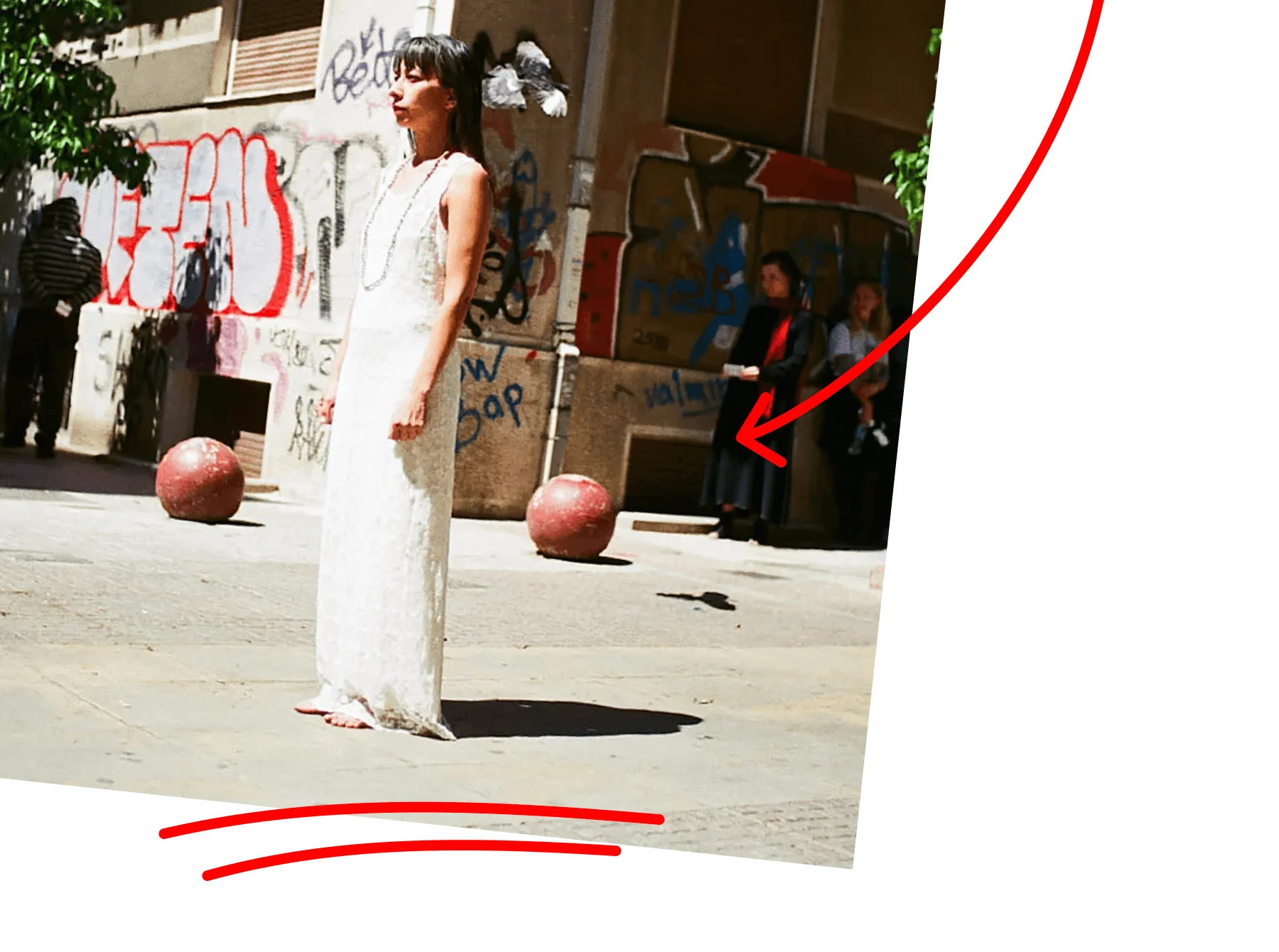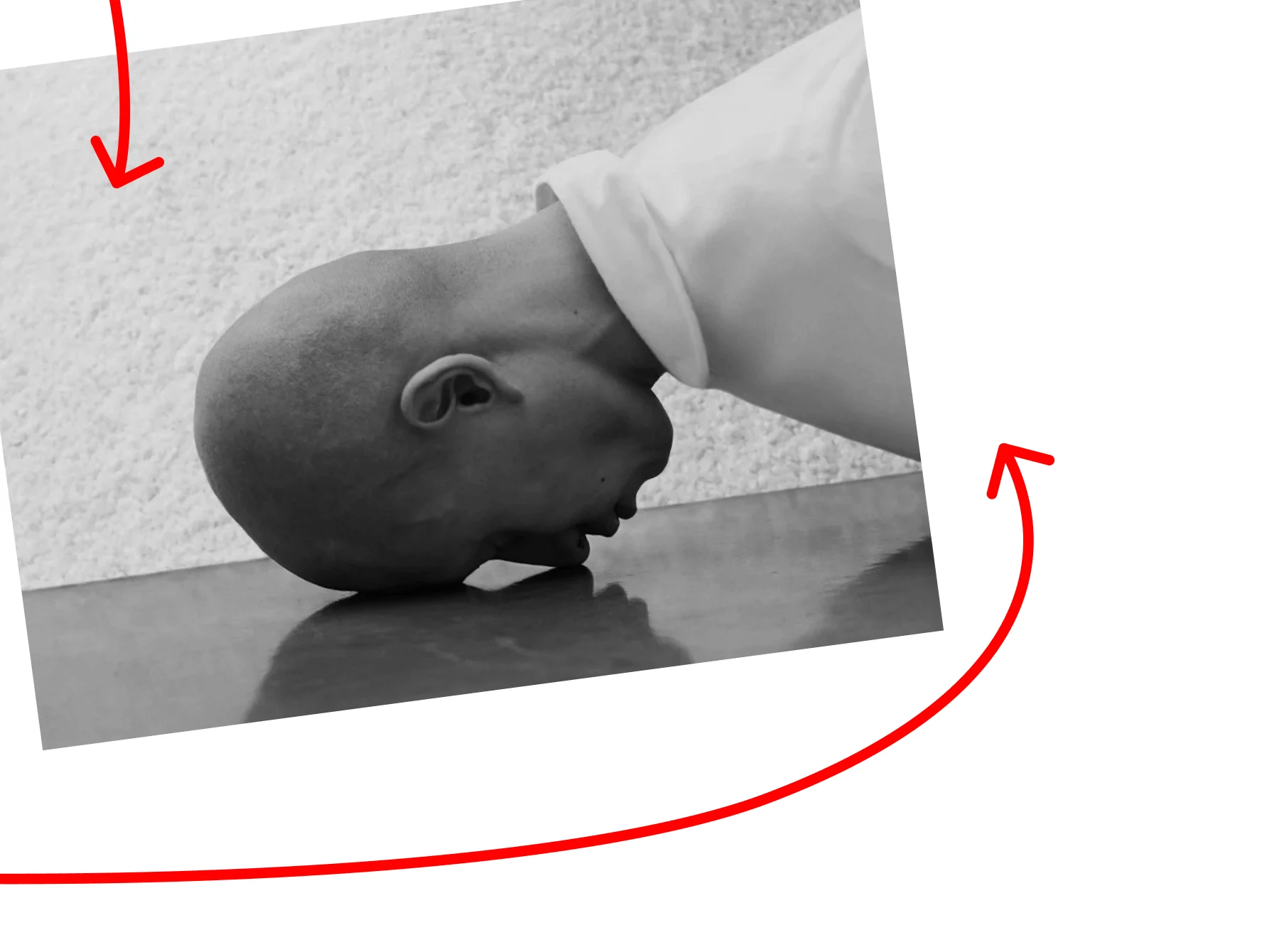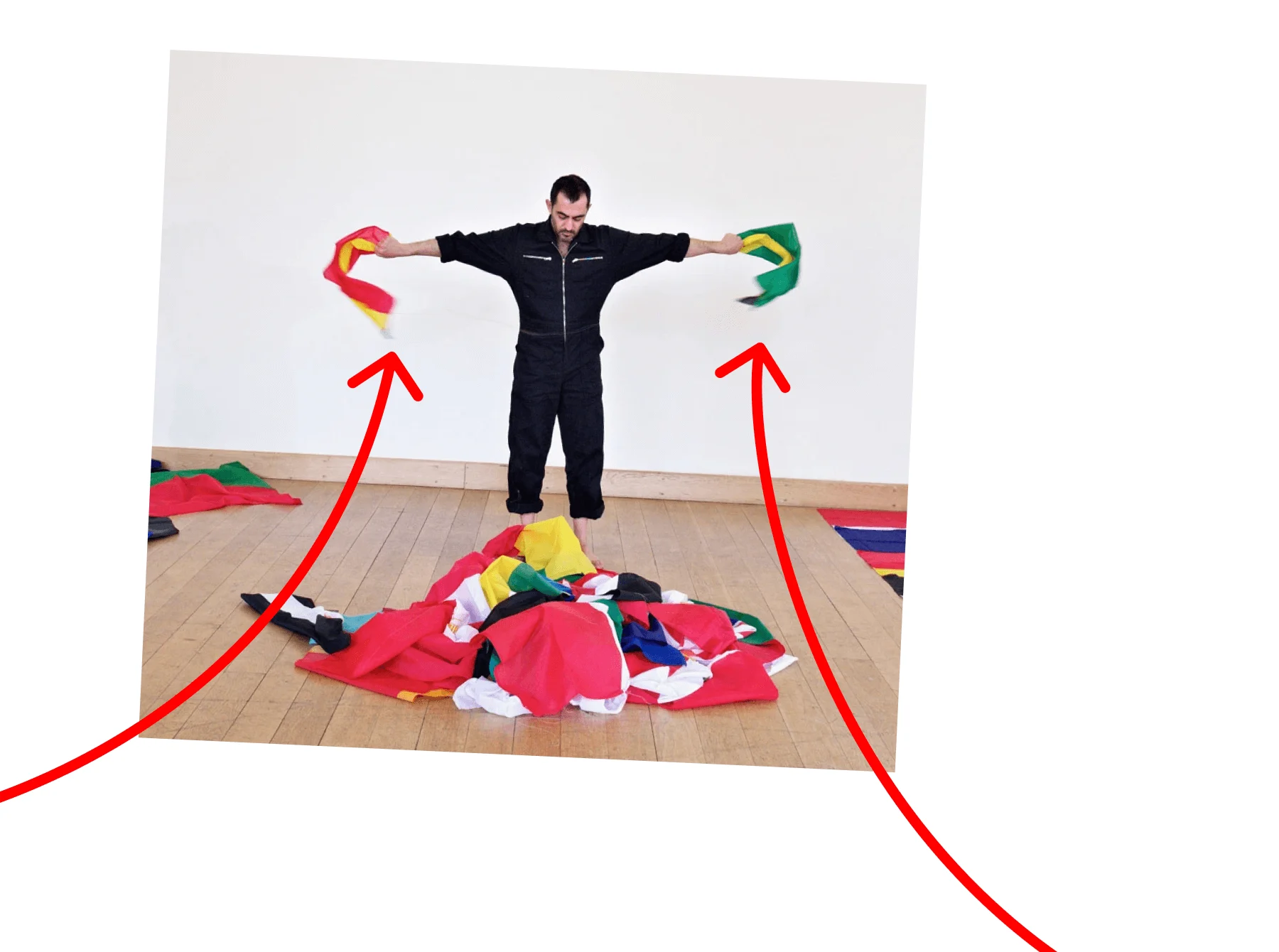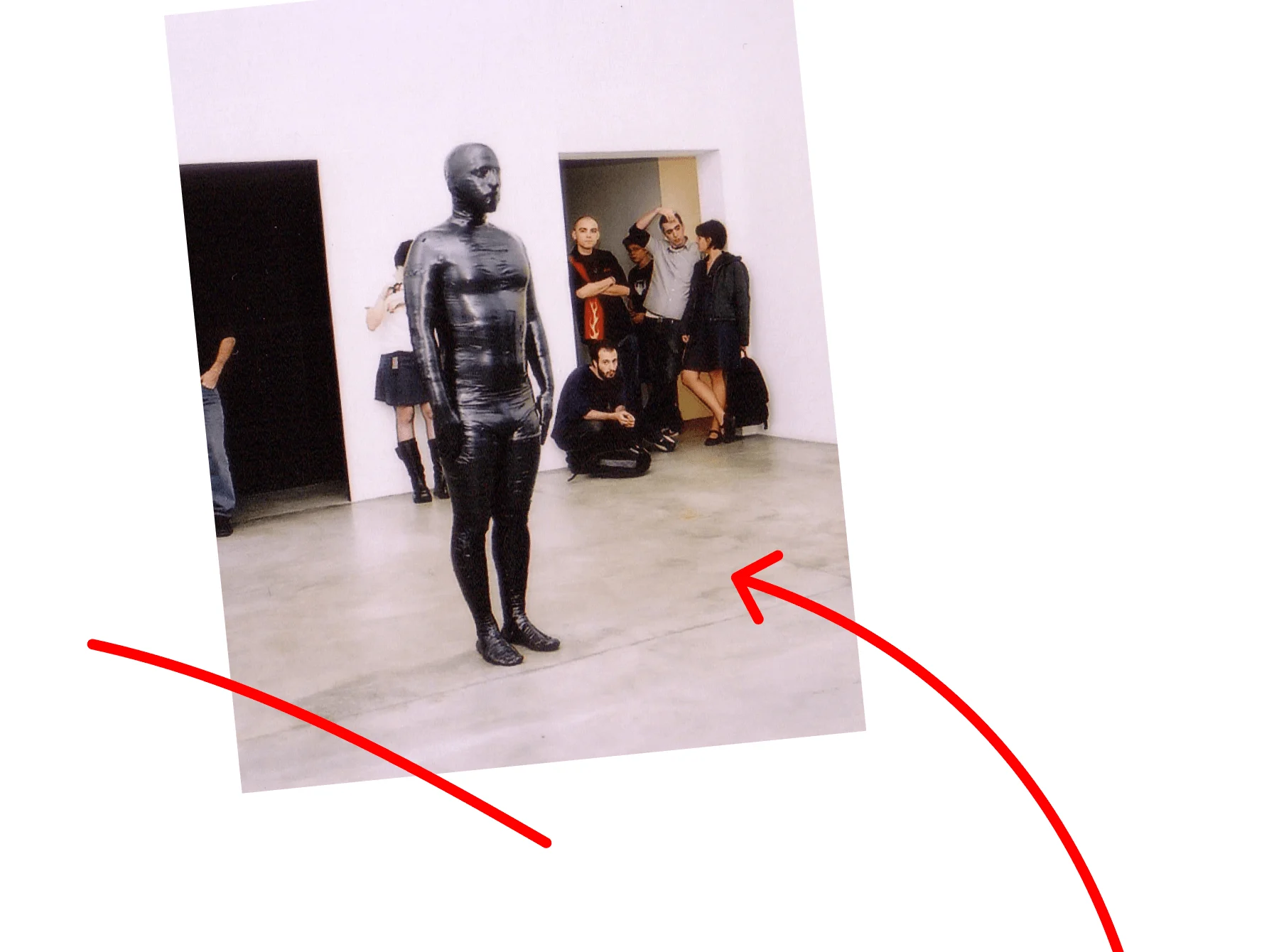
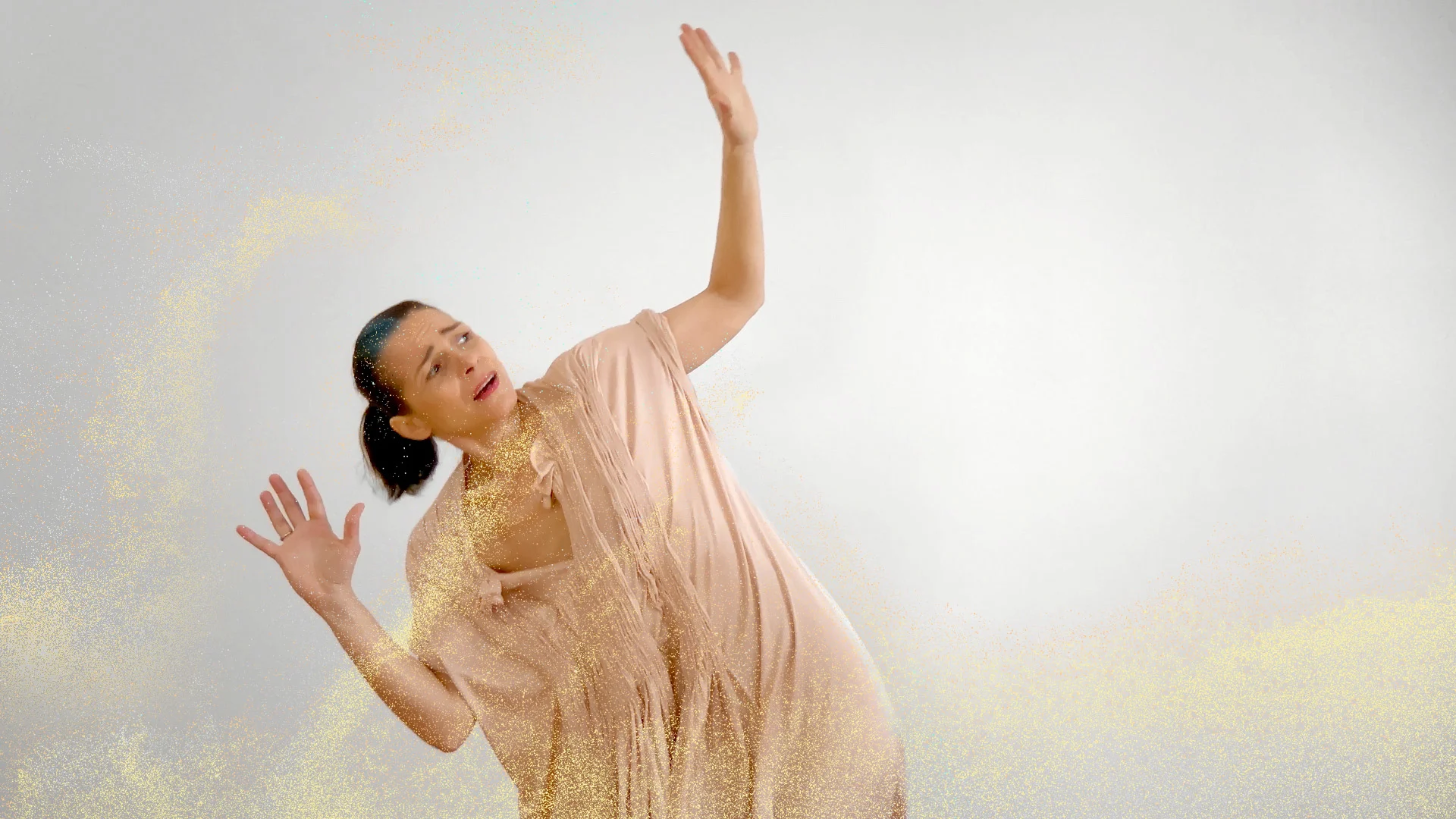

Ana Prvački’s medium is performance, her tools are her wit and humor, through which she delivers a clear message straight to the public.

Over the last 20 years, Berlin-based performance artist Ana Prvački has worn a variety of masks to meet her audience. She’s a sculptor, a performer, a watercolor painter. Depending on the project, she’s the welcoming host easing awkward situations, the whimsical conservationist warning about the plight of bees, and the self-help guru devising new modes of anxiety-relief. Allyssia Alleyne gives us an overview of Ana’s fascinating, ever-evolving practice.

Her first love was music
Born in 1976 in Pančevo, in the former Yugoslavia (now Serbia), Ana Prvački had the kind of upbringing you imagine for a child of artists. Growing up, she was surrounded by a rotation of actors, musicians and writers from her parents’ inner circle, who would drop by the house for dinner parties and impromptu performances.
One of those guests was Ljubisa Jovanovic, a respected Serbian flutist, who made an indelible impression on an eight-year-old Ana. On a night when she was unwell, Ljubija serenaded her at her bedside with a movement from Gluck’s Orfeo ed Euridice. “I was totally mesmerized by the sound of it. Right away I wanted to do it,” she recalls from her home in Berlin.
Two years later, after waiting for her facial structure to mature (“You won't be able to make a sound from a flute until your mouth is ready”) Ana began lessons, and quickly found herself ascending to the world of local competition, public performances and conservatory education, with Jovanovic and Swiss flutist Aurèle Nicolet among her world-class private tutors.
When Ana was 15, her parents – political dissidents who spoke out against then-president Slobodan Milošević – took her and fled Yugoslavia for Singapore. Unable to find the adequate infrastructure to support her dream of playing professionally, she decided to renounce the flute entirely. But while she no longer performs, music has remained an important part of her practice, employed as a means to spread joy. This was most apparent in 2010’s Wandering Band, which saw musicians wandering museums like the Castello di Rivoli or the Pompidou, or the New York’s High Line, performing scales and other exercises; and the erratic, erotic Tent, Quartet, Bows and Elbows, where musicians performed muffled by fabric.
She has also used music to communicate both personal and collective loss. In Lacrimoso, performed as part of Marina Abramović’s Sky Arts takeover in December 2020, she cried into her flute in an expression of pandemic mourning, accompanied by soprano Francesca Chiejina.
After abandoning her dream of becoming a professional flutist, Ana turned her focus to theater, originally enrolling at the LASALLE College of the Arts in Singapore instead of finishing high school. It was there that she developed her knowledge of mask work and technical production, both of which would inform her later work.


Wellness is at the core of her practice
From 2003 to 2009, Ana created work under the banner Ananatural Productions, a sort of conceptual laboratory for absurd (and occasionally practical) performance-products that appropriated the language and aesthetics of commercialized wellness. This period brought us 2007’s At the Tips of Your Fingertips (Towards a Clean Money Culture), a literal money-laundering service where she hand-washed paper bills with wet wipes; the Music Derived Pain Killer, for which her saliva was collected during a flute performance at the 2008 Sydney Biennale to be transmuted into a painkilling salve; and Papain Is In, a how-to video demonstrating how to transform an enzyme-rich papaya into a brightening face mask. (In short: Eat out the flesh and shove your face into the husk.)
For the 13th Gwanju Biennial in South Korea, Ana presented a series of three videos marketing imagined solutions for pandemic-related anxiety, including the CGI Multimask that can beautify, protect and cover up a nervous breakdown.
While Ana approaches the subject with humor, her interest in wellness comes from a place of sincerity: She regularly doles out skincare and recipe recommendations, fills her house with “a jungle” of plants, and starts each day with a bounce on her miniature trampoline. In 2000, she became a certified yoga instructor, and taught classes to put herself through art school.
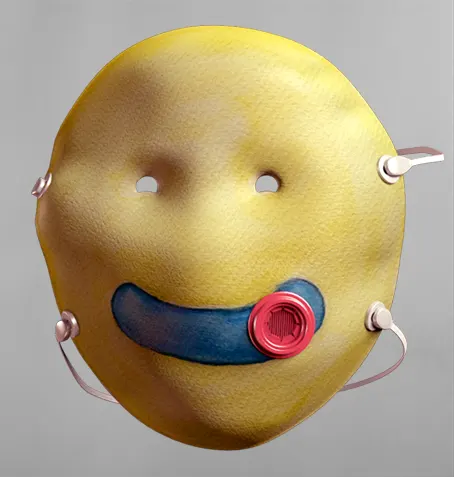
I’m also a great believer in naughtiness, and mischief, and I bring all of these things together.
“I think it's very hard to be a human in this day and age, and care is essential,” she says. Her work, she adds, is a way to bring that conversation to the fore, in a critical way: “Within my profession, in the art world, health and mental health are not a priority...there’s this fantasy that artists should be infantile and wild and inappropriate...so maybe I want to compensate for that. I’m also a great believer in naughtiness, and mischief, and I bring all of these things together.”
In recent years, this interest in care has been extended to the planet. Since 2009, when she inherited 500 kilograms of honey from her beekeeping grandfather, she has raised awareness about the dangers of declining bee populations, with works like The Bee Memorial (2018), installed in the Osher Sculpture Garden at the de Young Museum San Francisco, and the Hand Pollination Glove (2018).
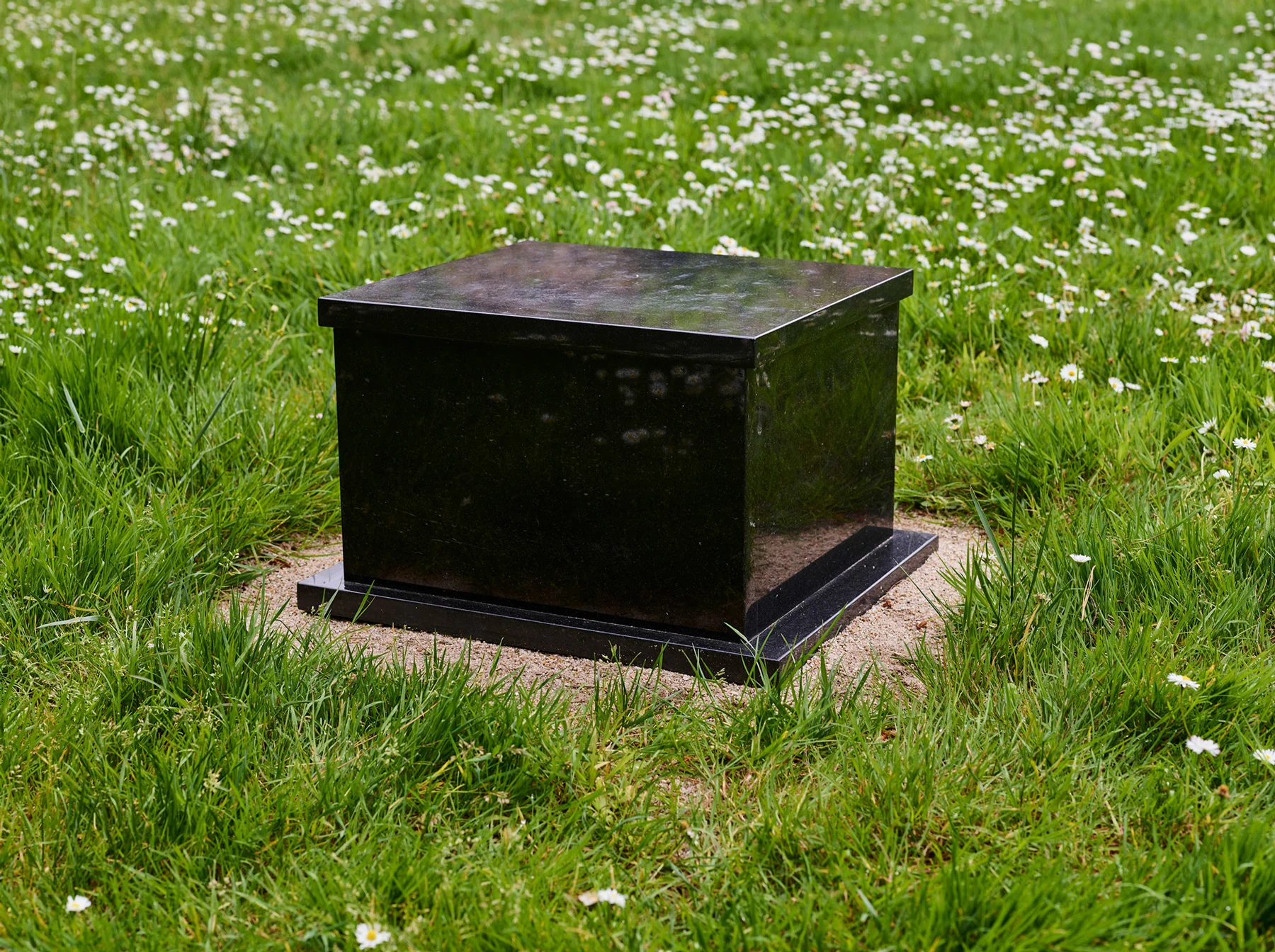

She pushes boundaries while following rules
Having lived, studied and worked around the world, Ana has a fascination with protocols, hospitality and etiquette. “I've always been interested in how one adapts because it's just something that I've had to practice myself,” she explains. “But I'm also really interested in these slippages, the points in conversation when you have awkwardness and laughter and joy, and how these things can be transformed.”
These interactions were at Greeting Committee, her commission for Documenta 13 in 2012. Working with art director Shane Valentino, Los Angeles-based sketch comedy troupe The Intecollectuals, and etiquette expert Vartouhi Keshishyan, she produced six videos demonstrating how to navigate awkward situations (How do you tell someone they have spinach in their teeth?) with empathy, and minimal embarrassment. For the duration of the exhibition, these public service announcements ran on screens installed in and around the exhibition spaces.
Meanwhile, in the more provocative DIY Chivalry (2008), she reversed the tradition of men laying down their coats for women to step over, stripping off her own garments to create her own path in an infinite video loop.
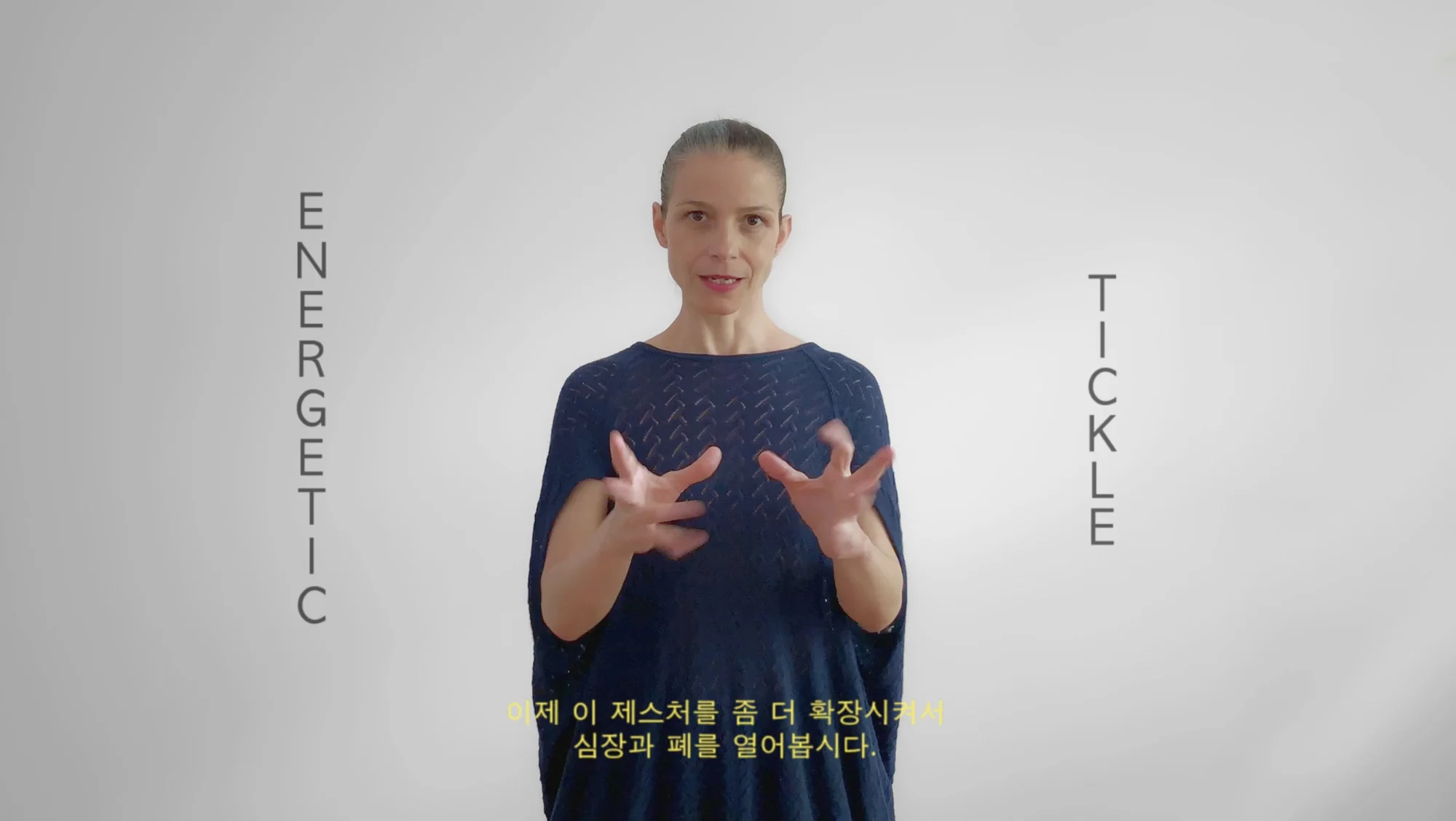

She aims to educate and entertain
In 2019, as a resident at the de Young Museum in San Francisco, Ana collaborated with Google Arts & Culture on Detour, a Webby Award-winning alternative tour of the museum. Using the Google Lens augmented reality app on their phones, visitors were able to access nine irreverent videos in which she shared little-known facts about the museum’s grounds and collection at specific points. It was her first experiment with emerging tech, but, she hopes, not the last. “I'm very much interested in balancing this digital virtual aspect with the human experience, the humor, the sensuality, the physicality,” she explains.
I commit to making my work as round as the Earth and my performances as compressed as water.
In this area in particular, Marina Abramović serves as a source of inspiration: “She's 74 and she’s doing all of this virtual and augmented reality,” she says. “She's very curious and she's completely interested in trying new things, it's fantastic. There are so few artists who actually have the courage to do that.”
When asked to encapsulate her practice, to suggest a guiding principle or unifying strand between her disparate output, Ana developed a new oath: “I commit to making my work as round as the Earth and my performances as compressed as water. I aim for pedagogical meme pollination and maximum viewer titillation.”
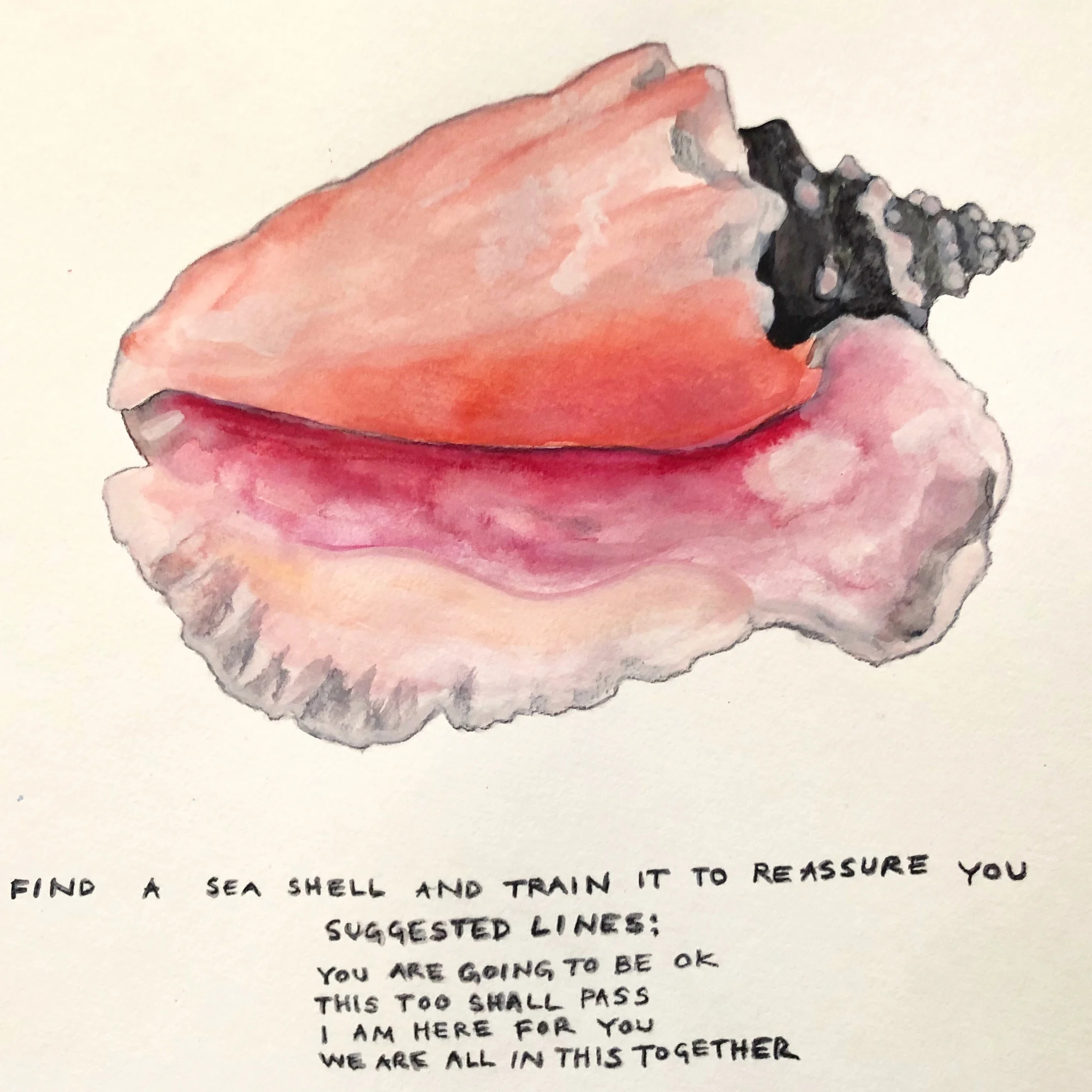
There’s continuity in certain interests, but there are no limits to my curiosity.
Think of it, she says, as a form of “edu-tainment,” a way of provoking, seducing and, hopefully, leaving a lasting impression on the viewer. But beyond that, she’s happy to leave room for interpretation, and for her own creative expansion.
“I feel like there's no topic or theme or issue that is not worthy of my interest,” she says. “Of course, there's continuity in certain interests, but there are no limits to my curiosity.”


